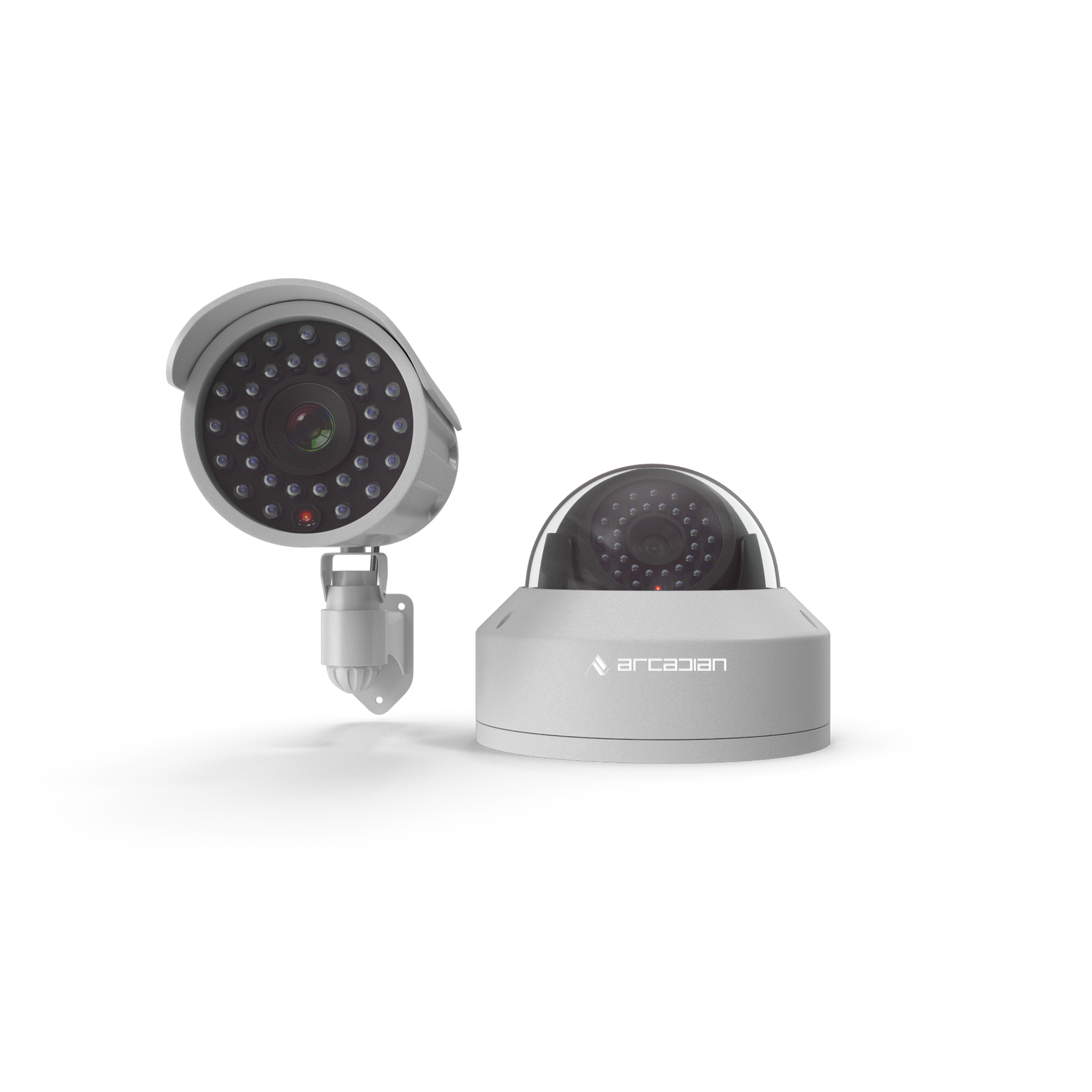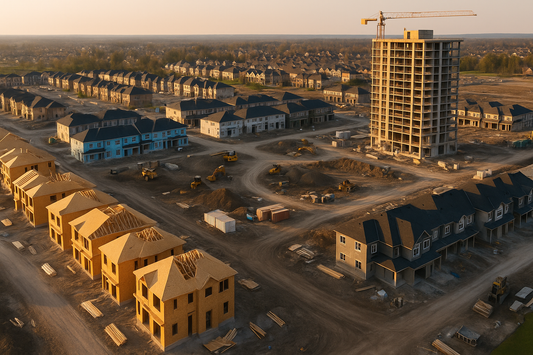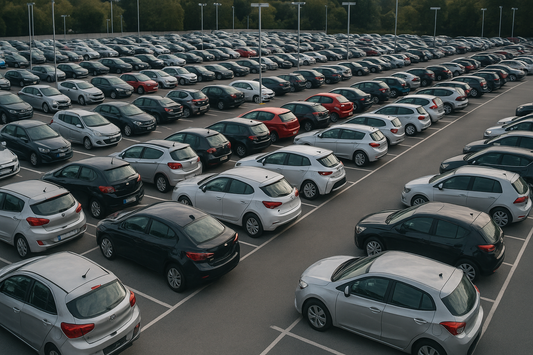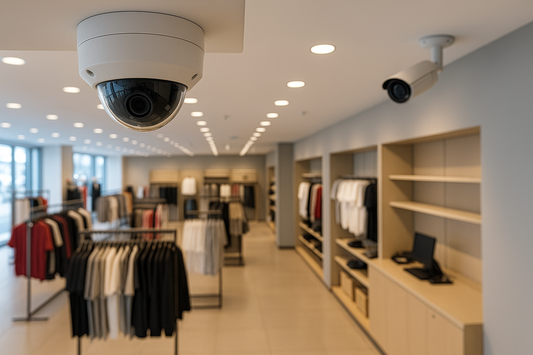CCTV and Security Cameras in the AI Era: A Complete 2025 Guide
Introduction In 2025, the global video surveillance market is expected to surpass USD 80 billion (Statista). Yet, most businesses still rely on static, outdated CCTV systems that look more like relics than reliable guardians. If you enjoy wasting money on false alarms, missing critical events, and confusing your operators with...

Introduction
In 2025, the global video surveillance market is expected to surpass USD 80 billion (Statista). Yet, most businesses still rely on static, outdated CCTV systems that look more like relics than reliable guardians. If you enjoy wasting money on false alarms, missing critical events, and confusing your operators with endless video feeds, by all means — stick with your old NVR.
But here’s the reality: security cameras are no longer just “eyes on walls.” They are intelligent, AI-enhanced, compliance-bound, and application-specific devices that can transform operations — if paired with the right platform. Brands like Axis, Hanwha, Avigilon, Hikvision, Dahua, Uniview, Bosch, Panasonic, Verkada, Genetec, Milestone, Eagle Eye Networks, Ring, and Nest compete for dominance. Standards like NDAA, ONVIF, GDPR, and ULC dictate what can and cannot be deployed in different markets. Protection ratings like IP66/IP67 and IK10 define durability. Lenses, form factors, and AI analytics determine effectiveness.
The problem? Too many businesses believe buying a “fancy camera” solves security. It doesn’t. Without AI that understands context — like ArcadianAI’s Ranger — a dome camera is just an expensive ornament.
Quick Summary / Key Takeaways
-
CCTV has evolved, but static NVRs are dangerously outdated.
-
Brands like Axis, Hanwha, Avigilon, and Hikvision dominate — with key compliance risks.
-
NDAA, ONVIF, IP/IK ratings, and GDPR shape camera choice.
-
AI is the difference between false alarms and real security.
-
ArcadianAI’s Ranger turns any camera into a contextual, cloud-native guard.
Background & Relevance
The urgency for better surveillance is no longer theoretical. According to the FBI, retail shrink hit over USD 112 billion in 2023. Organized retail crime rose by more than 25% year-over-year (NRF). Cities are reporting spikes in warehouse theft, daycare incidents, and hospital security breaches.
Meanwhile, technology is accelerating. The NDAA (National Defense Authorization Act) bans cameras from certain Chinese manufacturers in U.S. federal use. ONVIF standards enforce interoperability. IP66/IP67 weatherproofing and IK10 impact resistance are must-haves for outdoor environments. Decision makers can’t afford ignorance — choosing the wrong camera today could mean lawsuits, compliance fines, and millions in avoidable losses tomorrow.
Core Topic Exploration
What Types of CCTV Cameras Exist Today?
-
Bullet Cameras – Long-range, visible deterrents (Axis P1448-LE, Hanwha XNO-9082R).
-
Dome Cameras – Discreet, vandal-resistant (Avigilon H5A-D1, Hikvision DS-2CD2147G2-L).
-
Turret Cameras – Flexible, IR-friendly (Hanwha QNV-C9083R, Uniview IPC3618SB-ADF28KMC).
-
PTZ (Pan-Tilt-Zoom) – Active monitoring, auto-tracking (Bosch AUTODOME IP starlight 7000i, Hikvision DS-2DE7A425IW-AEB).
-
Fisheye / Panoramic – 360° coverage (Axis M3058-PLVE, Avigilon H5A Fisheye).
-
Thermal Cameras – Extreme environments, perimeter detection (Hanwha TNO-4050T, FLIR FC-Series).
-
Covert Cameras – Hidden surveillance for investigations (Panasonic WV-S3111L).
What Lens Technologies Shape Camera Performance?
-
Fixed Lenses – Simple, affordable (4mm / 6mm standard).
-
Varifocal Lenses – Adjustable zoom (Avigilon H5A varifocal 3.3–9mm).
-
Motorized Zoom Lenses – Remote calibration (Hanwha XNV-8082R).
-
Fisheye Lenses – Full 180–360° fields of view.
-
Thermal Lenses – Infrared imaging for low-light or smoke.
If you believe a cheap fixed lens will solve your surveillance needs, criminals will thank you. Contextual AI with smart lenses, however, transforms grainy video into actionable intelligence.
What Standards Define CCTV in 2025?
-
NDAA – U.S. bans Hikvision, Dahua, Huawei, Uniview in federal contracts.
-
ONVIF – Ensures interoperability between brands (Axis, Hanwha, Bosch certified).
-
GDPR – European privacy compliance — violations cost millions.
-
ULC/UL – Safety certification for Canada and North America.
-
IP Ratings – IP66/IP67 for water resistance.
-
IK Ratings – IK10 for impact resistance.
If your camera isn’t NDAA-compliant and you operate in the U.S., you’re already non-compliant. But hey, who doesn’t love legal liability?
Comparisons & Use Cases
ArcadianAI vs Competitors
| Feature | ArcadianAI Ranger (VSaaS) | Verkada (VSaaS) | Genetec (VMS) | Eagle Eye Networks (VSaaS) | Milestone (VMS) | Traditional NVRs |
|---|---|---|---|---|---|---|
| Camera Compatibility | Any ONVIF/IP camera | Only Verkada cameras | Broad, but complex | Broad | Broad | Vendor-locked |
| NDAA Compliance | Yes (camera-agnostic) | Yes | Yes | Yes | Yes | Often no |
| False Alarm Reduction | 30–65% via AI context | Limited | Dependent on analytics | Limited | Dependent on analytics | None |
| Cloud-Native | Yes | Yes | Hybrid / heavy on-prem | Yes | Hybrid | No |
| Multi-Location Dashboards | Yes | Limited | Yes | Yes | Yes | No |
| Cost Flexibility | SaaS tiers | Hardware + SaaS bundle | Licensing heavy | SaaS tiers | Licensing heavy | Hardware only |
Industry-Specific Applications
-
Retail – Loss prevention, shrink reduction, forensic search (Walmart, Target, CVS).
-
Logistics/Warehouses – Dock monitoring, theft prevention (UPS, FedEx, DHL hubs).
-
Healthcare – Patient safety, compliance (HIPAA, GDPR).
-
Education/Daycares – Child safety, access control.
-
Cannabis – Regulatory compliance (NDAA, ULC).
-
Airports – Perimeter security, LPR (license plate recognition).
-
Smart Cities – Traffic, crime analytics.
Without AI, these industries drown in false alarms. With ArcadianAI, cameras become proactive digital guards.
Common Questions (FAQ)
Q1: Are Hikvision and Dahua cameras banned in the U.S.?
Yes, under the NDAA for federal use. Private sectors still use them, but at compliance risk.
Q2: What is ONVIF in CCTV?
ONVIF is an interoperability standard allowing cameras and VMS/VSaaS platforms from different manufacturers to work together.
Q3: What’s the difference between NVR and VSaaS?
NVRs are on-premise recorders, static and vendor-locked. VSaaS (like ArcadianAI) is cloud-native, scalable, and camera-agnostic.
Q4: What does IP66 or IP67 mean?
They define dust/water protection. IP67 means immersion-proof. IP66 means heavy rain-proof.
Q5: How does AI reduce false alarms?
By analyzing context — ignoring rain, animals, and irrelevant motion while escalating only real risks.
Conclusion & CTA
The CCTV world in 2025 is complex, noisy, and full of compliance traps. Brands throw part numbers and megapixels at you, but real security isn’t about the camera. It’s about the AI platform behind it.
If decision makers enjoy lawsuits, false alarms, and operator fatigue — they can keep investing in static NVRs and proprietary bundles.
But if they want adaptive, compliant, future-proof protection — ArcadianAI’s Ranger shows how to turn any camera into a proactive AI guard.
Security Glossary (2025 Edition)
AI Alerts — Automated notifications when AI detects anomalies.
Avigilon H5A — NDAA-compliant AI-enabled camera series from Avigilon.
Bullet Camera — Long, cylindrical CCTV camera for outdoor use.
Dome Camera — Ceiling-mounted camera enclosed in a dome, vandal-resistant.
False Alarm — Incorrect alert triggered by irrelevant motion or noise.
Fisheye Camera — 180–360° panoramic lens surveillance camera.
Genetec Security Center — Popular VMS with hybrid deployments.
Hanwha PNV-A9081R — AI-powered dome camera from Hanwha Techwin.
IK10 — Industry standard for highest impact resistance rating.
IP66/IP67 — Protection standards against dust and water.
Milestone XProtect — Leading open-platform VMS software.
NDAA — U.S. law banning certain Chinese cameras in federal projects.
ONVIF — Global standard ensuring interoperability between CCTV devices.
PTZ Camera — Pan-Tilt-Zoom camera for active surveillance.
Ranger (ArcadianAI) — Cloud-native, camera-agnostic AI surveillance platform.
Thermal Camera — Sensor that detects heat signatures for low-light scenarios.
Turret Camera — Ball-and-socket style CCTV camera with flexible angles.
ULC Certification — Canadian safety and compliance standard.
Verkada — Closed-ecosystem VSaaS provider requiring proprietary cameras.
VSaaS — Video Surveillance as a Service: cloud-based monitoring platform.

Security is like insurance—until you need it, you don’t think about it.
But when something goes wrong? Break-ins, theft, liability claims—suddenly, it’s all you think about.
ArcadianAI upgrades your security to the AI era—no new hardware, no sky-high costs, just smart protection that works.
→ Stop security incidents before they happen
→ Cut security costs without cutting corners
→ Run your business without the worry
Because the best security isn’t reactive—it’s proactive.







